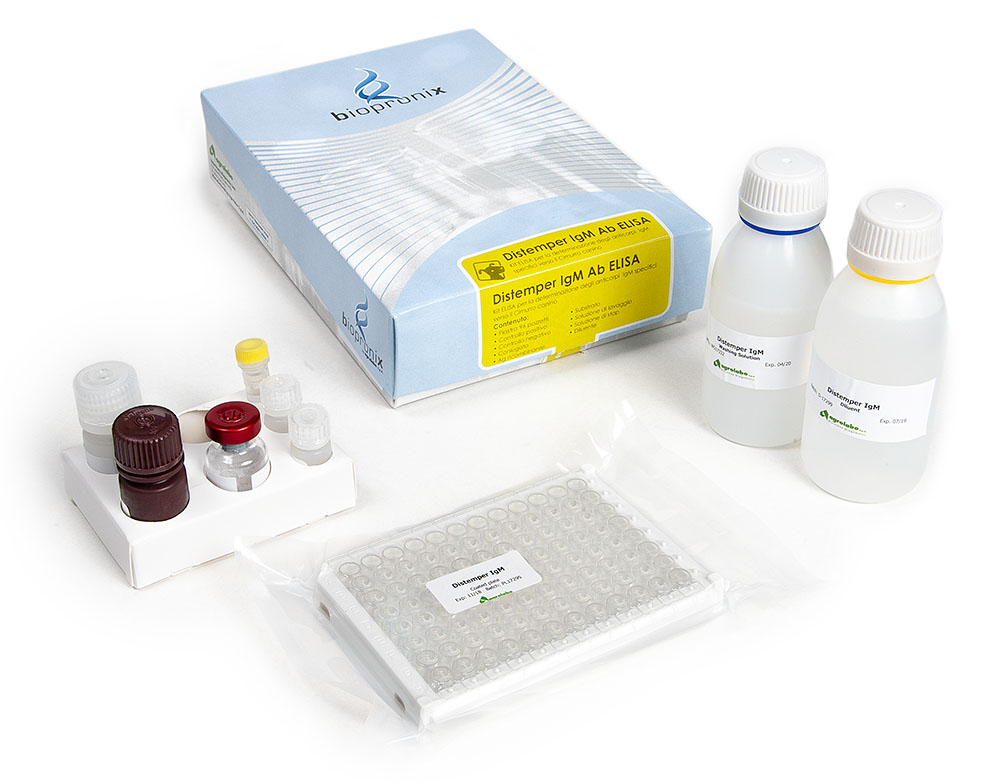Distemper IgM Ab ELISA
ELISA kit for the detection of IgM antibodies to canine distemper virus
This kit is based on the ELISA enzyme immunoassay technique for the detection of IgM antibodies to canine distemper virus (CDV) in canine serum or plasma.
Distemper is a systemic disease that affects dogs and other wild canids.
The aetiological agent is a morbillivirus (Canine Distemper Virus – CDV), belonging to the Paramixoviridae family.
The virus particularly affects puppies, regardless of breed. It is present all over the world, it is particularly frequent in cities, in dog colonies and in general wherever dogs are in contact with each other.
Although contagious, the virus has poor environmental resistance as it is sensitive to UV rays, heat, desiccation and is quickly inactivated by common disinfectants.
The virus is transmitted by direct contact, inhalation and trans-placental route. The virus is excreted in the faeces and secretions in the acute phase of the infection and localizes in the nervous system, eyes, skin and lungs.
Mortality can reach 50%, especially in young and unvaccinated animals.
Distemper is an insidious disease: the typical symptoms are also detectable in other common and non-serious diseases. The first symptom is usually fever.
The virus causes serious respiratory, gastrointestinal, dermatological and neurological problems at a more advanced stage of the disease.
- Respiratory problems: nasal discharge, cough, breathing difficulties
- Digestive problems: gastroenteritis with vomiting and diarrhea.
- Skin problems: dermatitis, thickening of the skin of the nose and pads.
- Nervous system problems: convulsions, muscle spasms up to paralysis of the limbs.
- Ocular problems: conjunctivitis with ocular drain.
.
Following a transient leukopenia induced by viral infection, the secondary bacterial infection usually stands up with a leukocytosis. The transient decrease in white blood cells further weakens the immune system: as a result sick puppies are exposed to secondary infections and a worsening of the clinical picture.

